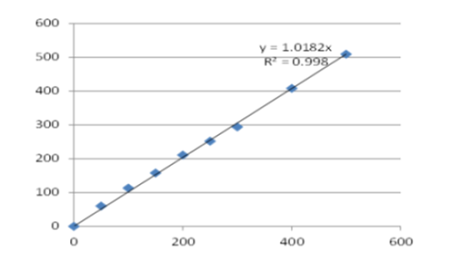


Indian Journal of Science and Technology
DOI: 10.17485/IJST/v14i29.1412
Year: 2021, Volume: 14, Issue: 29, Pages: 2391-2399
Original Article
A Gnanavelu1, T S Shanmuganathan2, V Deepesh1*, S Suresh1
1Regional Laboratory, Central Pollution Control Board, Regional Directorate, Bengaluru, 560079, Karnataka, India
2QA Laboratory, Manali Petrochemicals Ltd, Chennai, India
*Corresponding Author
Email: [email protected]
Received Date:31 July 2021, Accepted Date:19 August 2021, Published Date:30 August 2021
Background/ Objectives: Chemical Oxygen Demand (COD) is a widely used aggregate organic pollutant index in national discharge standards and is one of the critical parameters for water quality assessment. The conventional COD determination by wet oxidative method encounters the problem of chloride interference in water samples with high chloride content. The dichromate reflux method oxidizes 85-95% of organic matter and also 100% of chloride ions in the samples, without an appropriate chloride masking strategy. The standard method cannot measure COD accurately in samples containing more than 2000 mg L-1 chloride. The present study demonstrates and validates a modified procedure for the determination of COD in industrial sample with high calcium chloride content and low organic load. Method: Petrochemical industries manufacturing Propylene Oxide and Propylene Glycol via chlorohydrin route generate wastewater with high calcium chloride content. Due to high chloride content, the standard analysis method could not produce reliable data for COD values with known precision and accuracy. The standard method based on dichromate was modified, with an additional mixing step for a specified time to enhance the chloride masking by mercuric sulphate. Undiluted sample (20 mL) was mixed with the required amount of mercuric sulpahte to maintain 10:1 ratio to chloride content and 10 mL of sulphuric acid at 150-175 RPM for 20 minutes at room temperature to increase the contact time/ chloride masking. Method validation attributes of the modified procedure were assessed and found to be complying with the acceptance criteria. Findings: We developed a modified procedure for the standard dichromate based chemical oxygen demand (COD) determination in industrial wastewater samples rich in calcium chloride. An additional mixing step is introduced in the standard procedure to enhance the chloride masking with mercuric sulphate in samples containing high chloride. The amended procedure resulted in accurate COD values in samples with low organic load, rich in calcium chloride and the modifiedmethod was successfully validated. Novelty: The modified procedure with mixing step to enhance chloride masking was found to be satisfactory for determining COD in calcium chloride-rich industrial effluent.
Keywords: Chemical Oxygen Demand (COD); Chloride interference; Modification of standard method; Wastewater analysis; Calcium chloride; Validation
© 2021 Gnanavelu et al. This is an open-access article distributed under the terms of the Creative Commons Attribution License, which permits unrestricted use, distribution, and reproduction in any medium, provided the original author and source are credited. Published By Indian Society for Education and Environment (iSee)
Subscribe now for latest articles and news.